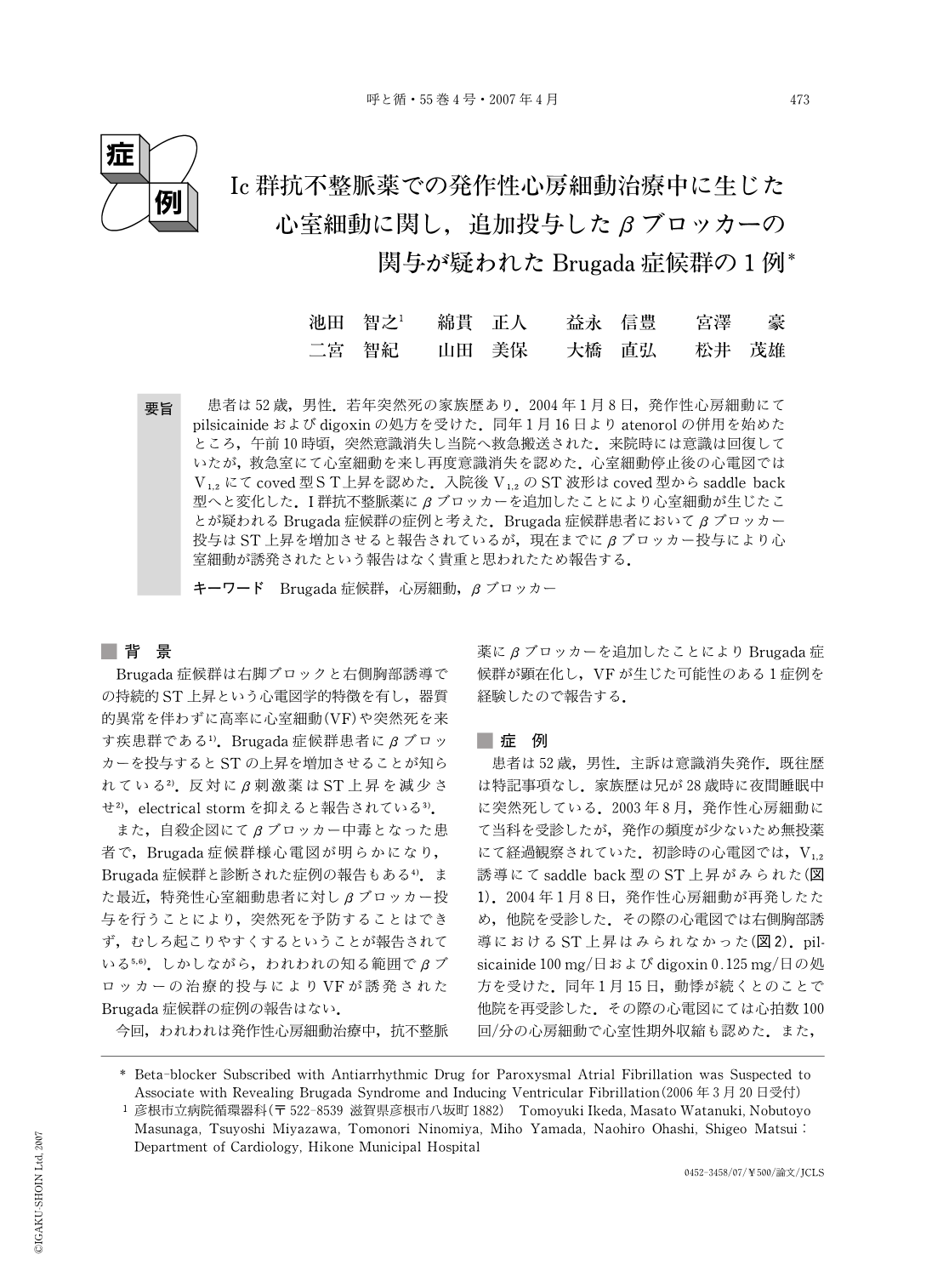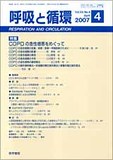Japanese
English
- 有料閲覧
- Abstract 文献概要
- 1ページ目 Look Inside
- 参考文献 Reference
要旨 患者は52歳,男性.若年突然死の家族歴あり.2004年1月8日,発作性心房細動にてpilsicainideおよびdigoxinの処方を受けた.同年1月16日よりatenorolの併用を始めたところ,午前10時頃,突然意識消失し当院へ救急搬送された.来院時には意識は回復していたが,救急室にて心室細動を来し再度意識消失を認めた.心室細動停止後の心電図ではV1,2にてcoved型ST上昇を認めた.入院後V1,2のST波形はcoved型からsaddle back型へと変化した.I群抗不整脈薬にβブロッカーを追加したことにより心室細動が生じたことが疑われるBrugada症候群の症例と考えた.Brugada症候群患者においてβブロッカー投与はST上昇を増加させると報告されているが,現在までにβブロッカー投与により心室細動が誘発されたという報告はなく貴重と思われたため報告する.
In patients with Brugada syndrome, beta-blockade is known to increase ST-segment elevation. However, to our knowledge, a Brugada syndrome and ventricular fibrillation(VF) following additional beta-bloker with an antiarrhythmic drug has never been published. A-52-year-old man was admitted to our hospital due to loss of consciousness in his office. He had been treated with pilsicainide for paroxysmal atrial fibrillation for 8 days, but atenorol had been additionaly prescribed that day. He lost consciousness in the emergency room again. An ECG monitor revealed VF, which terminated spontaneously.The ECG after termination of VF showed coved-type ST segment elevation in leads V1,2. The next day the follow up ECG revealed saddleback-type pattern. The patient received cardiac catheterization and an echocardiogram, and these revealed an intact coronary artery and normal cardiac function. His family history showed the sudden death of his brother at 28 years of age. Beta-bloker with an antiarrhythmic drug for paroxysmal atrial fibrillation was suspected to be associated with the occurrence of a Brugada syndrome and inducing VF.
Key words Brugada syndrome, atrial fibrillation, beta-blocker

Copyright © 2007, Igaku-Shoin Ltd. All rights reserved.


